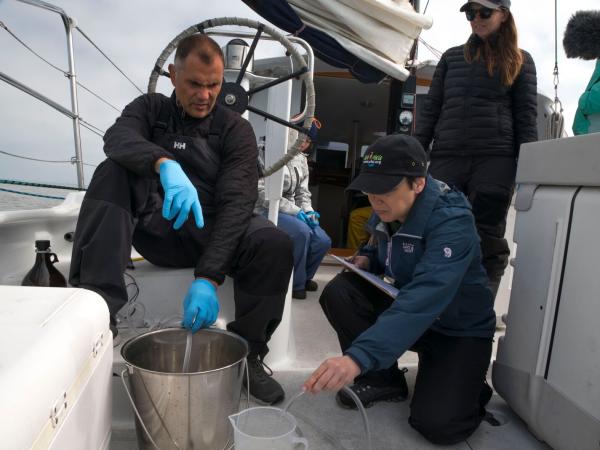About Next Generation Urban Greening
Next Generation Urban Greening is a broad partnership to help cities achieve more benefits through green infrastructure.
In collaboration with partners, SFEI is developing new information and tools that municipalities, regulators, NGOs, and other stakeholders need to simultaneously address multiple management challenges, including improving water quality, flood risk reduction, habitat provision, and heat resilience.
Throughout the project, concepts and frameworks are being iteratively developed, refined, and adjusted to meet the needs of practitioners in the region. City agencies, regulators, and practitioners are invited to participate through annual Regional Forums and provide input and feedback as SFEI develops guidance and tools.
The project includes a focused case study in the Islais Creek watershed in San Francisco to showcase benefit quantification and spatial prioritization tools. Three green stormwater infrastructure (GSI) features in San Francisco are being monitored during storm events to evaluate the removal of PCBs, mercury, microplastics, and contaminants of emerging concern. The lessons learned from the case study and monitoring are being applied through a set of implementation projects in southeast San Francisco.
The Regional Framework will integrate the quantitative methods and qualitative guidance that are advanced through this project with applied implementation project examples. This framework and shared learning process will support rapid adoption by regional stakeholders, leading to improved environmental outcomes in numerous cities over the coming decade.
What is urban greening?
Urban greening is a broad term encompassing a wide range of strategies that promote ecological health and functioning, and provide ecosystem services within city environments.
Urban greening activities include any number of interventions that introduce vegetation and natural features into the urban realm. They include creating and restoring parks and green space, building greenways along pedestrian and bicycle routes, planting street trees, and installing green walls and green roofs.
“Green infrastructure,” a term we use often in this project, is another way of framing urban greening. Green infrastructure, as the name implies, relates to developing green features that will generate specific public services or benefits. For this project, we define green infrastructure broadly, ranging from highly engineered features (e.g., bioretention features, street trees in structural cells) to more natural, less designed green spaces and landscaped areas (e.g., trees in parks; open, plantable areas).
Project funders
Funding for Next Generation Urban Greening was provided by the U.S. Environmental Protection Agency (EPA) Region IX’s San Francisco Bay Water Quality Improvement Fund
Project advisors
The Design Advisory Team is providing valuable input throughout the project on stormwater monitoring, multiple benefit assessment, trees and green stormwater infrastructure, project outputs, and design guidance.
Josh Bradt, Bay Area Regional Collaborative
Reid Bogert, San Mateo Countywide Water Pollution Prevention Program
John Leys, Sherwood Design Engineers
Sara Grove, HT Harvey & Associates
Peter Brastow, City of San Francisco, Department of the Environment
Jill Bicknell, EOA and Santa Clara Valley Urban Runoff Pollution Prevention Program
Sara Meerow, Arizona State University, School of Geographic Science and Urban Planning
Ted Endreny, SUNY, Environmental Science and Forestry
Elizabeth Fassman Beck, Southern California Coastal Watershed Research Project
Project partners
San Francisco Public Utilities Commission (SFPUC) and San Francisco Department of Recreation & Parks (SFRPD)
Staff
Melissa Foley, Alicia Gilbreath, Lauren Stoneburner, Pedro Avellaneda, Cate Jaffe, Pete Kauhanen, Kelly Iknayan, Sacha Heath, Alison Whipple, Kayli Paterson, Sean Baumgarten, Diana Lin, Jennifer Dougherty, Beth Ebiner
Contact
For more information about this project, please contact Melissa Foley ([email protected])











